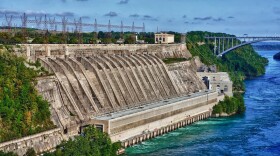-
Rising seas are forcing Indigenous communities to move. Higher temperatures are causing drought and loss of traditional foods. Michael Charles, a Navajo professor at Cornell University, is trying to quantify the impact of climate change on Indigenous life in North America. Our Living Lands producer Daniel Spaulding spoke to Charles about his work.
-
Some government-backed food distribution programs are experiencing supply chain issues nationwide. This is having a significant effect on Indigenous communities. In response, the USDA is providing emergency grants for Tribes.
-
A musician from our region is channeling his Navajo ancestors and an innovative composer to honor those lost in the long walk.
-
The Navajo Nation takes issue with three new hydropower projects.
-
Pouring a glass of water in your kitchen isn’t always easy on tribal lands. Overall, Native American families are 19 times more likely than a white family to lack indoor plumbing. And it’s a big problem in our region.
-
As residents of a small community on the Navajo Nation eagerly await construction of a 7-mile water pipeline from the Rio Grande, they imagine the luxuries of running water.
-
Construction will soon begin on a 7-mile pipeline that will deliver water from the Rio Grande to the small Navajo community of To’Hajiilee, where the water's so bad the local government trucks in bottled water for residents.
-
For some households in the Navajo Nation safe drinking water is not accessible. Now a research project from Johns Hopkins University is looking at just how many homes are going without.
-
Tribal communities have historically had a hard time getting clean drinking water and that can affect the health of their babies. Some public health studies have tried to change the narrative.
-
The Diné Household Water Survey, a first-of-its-kind two-year project led by the Johns Hopkins Center for Indigenous Health, aims to accurately quantify the number of households without access to safe drinking water.

Play Live Radio
Next Up:
0:00
0:00
Available On Air Stations











